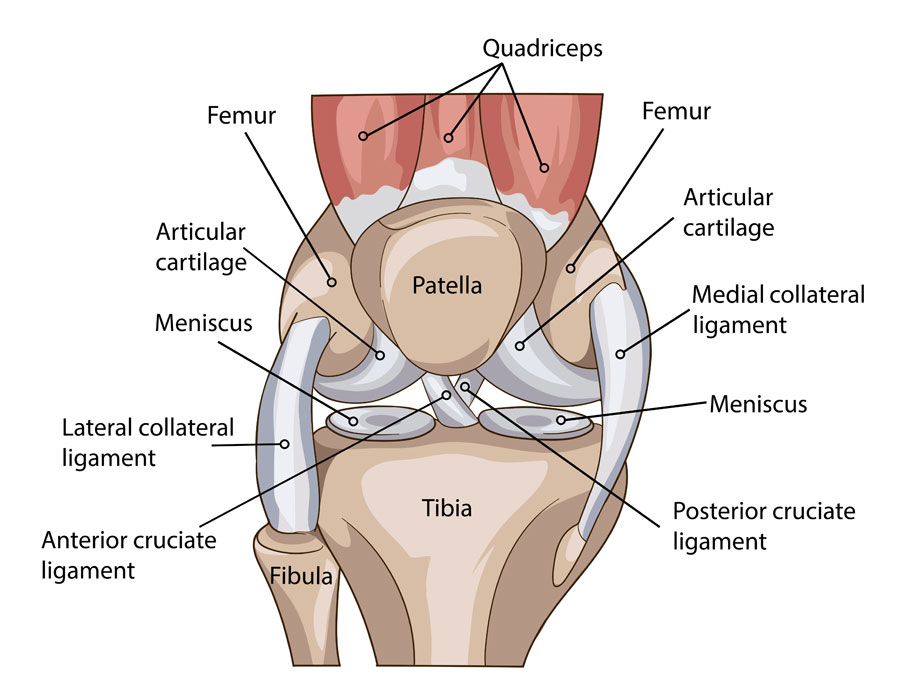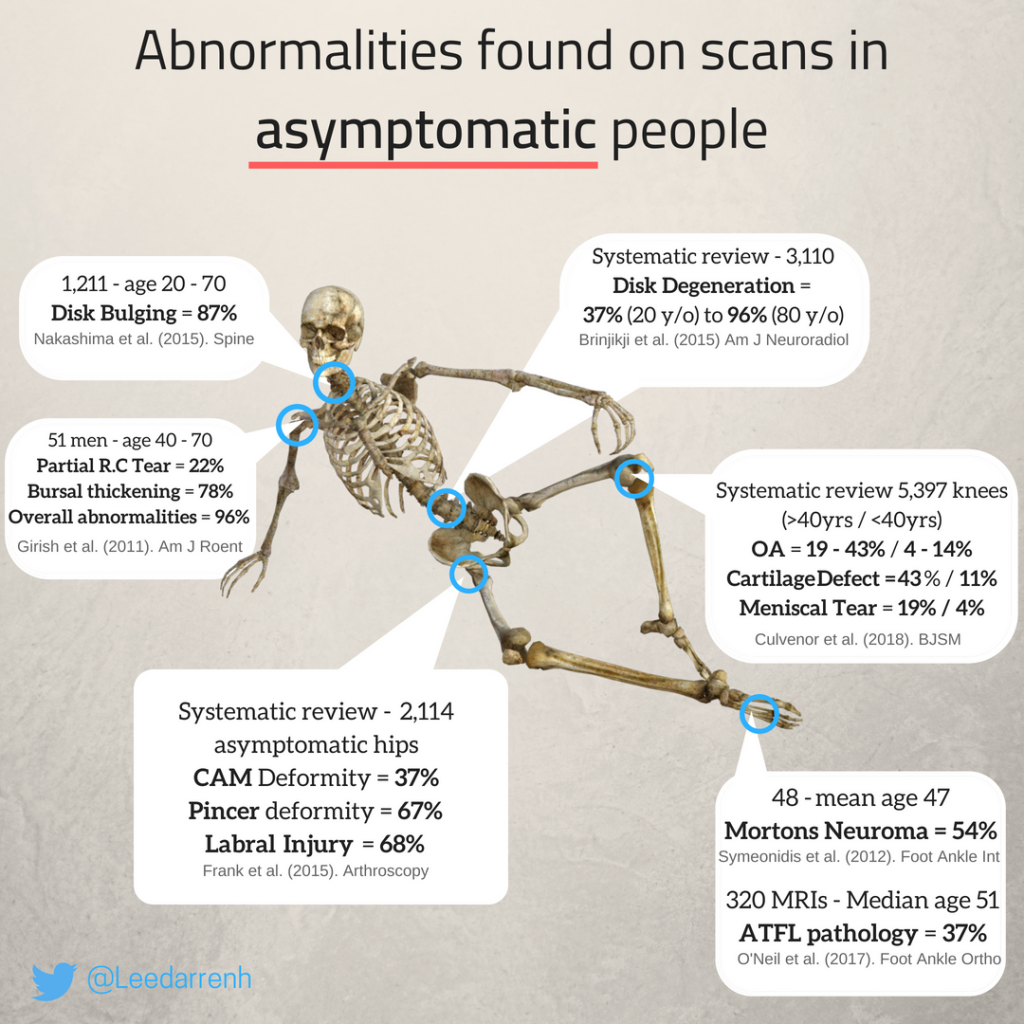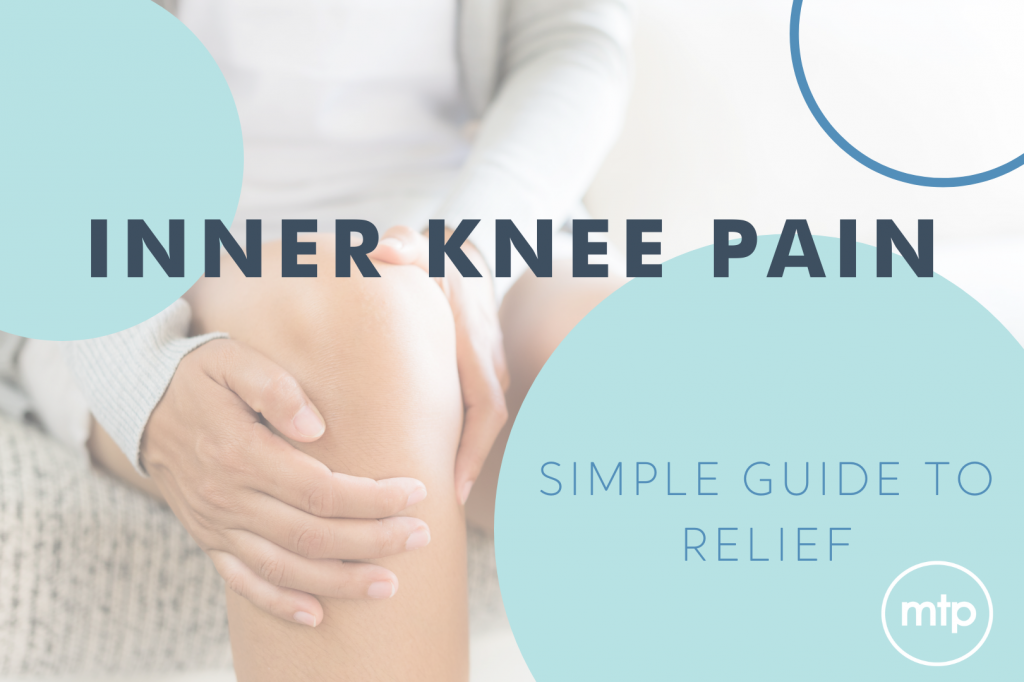Inner Knee Pain: What Is It & How To Treat It
Inner Knee Pain: What Is It & How To Treat It
The knee is not only the largest joint in the body but it’s also one of the most complex. We use our knees for so many parts of day to day life and it’s not until knee pain strikes that we realise how important they are. The first step to recovery is identifying the exact location of your knee pain, as this will help you get the most out of your treatment.
The inner knee, in particular, is extremely vulnerable to pain and injury and when experienced it can limit our ability to enjoy the activities we love. This guide will provide information and guidance on how to treat medial knee pain as well as exploring potential causes and symptoms.

The inner knee comprises of the medial meniscus, medial collateral ligaments & other medial structures
How to identify and treat inner knee pain
From a sharp stabbing sensation to a dull ache, pain in the inner knee can result in a variety of symptoms. If your knee feels warm, tender and swollen when pressure is applied, this could be bursitis or an inflamed bursa.
Cracking or popping when the joint moves paired with pain along the inside of your knee is often a sign of a torn MCL or meniscus and treatment for this type of medial inner knee pain will typically involve a knee brace.
With degenerative conditions like osteoarthritis, knee pain stems from the wearing down of protective cartilage.
Inner knee pain can also be both short-term or chronic and so it’s crucial you receive a professional diagnosis before you proceed with any treatment for medial inner knee pain. One indication of the severity of your knee pain is if your symptoms improve over the course of the day, this may suggest an inflammatory knee condition. However, if your symptoms tend to worsen throughout the day, this could be indicative of a degenerative disorder like arthritis.
Treatment options for medial inner knee pain
Treatment of inner knee pain can be tough to give general recommendations on. This is because the medial compartment of our knee joint is the most susceptible to the forces changes that poor movement habits impart on our knees. In other words, if we’re experiencing some kind of issue in our body that is likely to contribute to knee pain, then we’re likely to first feel it in the structures of the inner knee. These factors would be considered abnormal joint loading, which we have a detailed blog on HERE.
In some more mild cases, you can treat the pain at home simply through rest and simple exercises. A great place to start is this program of the 6 key exercises for knee pain, that we recommend to every person who is experiencing knee pain. These essential things 6 have been designed to teach the fundamental skills that help you to correct the most common reasons why you might be likely to experience knee pain, while helping to strengthen your body in the process.
For more serious cases, or if the injury is sports-related, we advise that avoiding proactive activities following the principles of load management (see below) until the knee has healed is the best way to get about ensuring an adequate recovery. Another easy relief option for medial inner knee pain is to apply ice to the injured area three to four times a day, for 20 minutes at a time. It should be noted that this is purely for relief and will not have major impacts on the healing of the tissue. There are also many over-the-counter medications like aspirin or ibuprofen that can help relieve pain and ease inflammation. Once again these should be only used if absolutely necessary.
View this post on Instagram
If you would like to know how to treat more serious instances of medial knee pain, you need to consult a doctor to give you a proper diagnosis. Your doctor is likely to suggest conservative treatment options such as detailed exercise & may indicate imaging. It’s important to remember that this scan is not likely to change much in the way of how the issue is treated & shouldn’t be taken as a blanket statement for how bad your knee is. It’s best use is to rule out anything sinister (e.g. cancer or serious disease) that can’t be helped through conservative treatments. They may also indicate things like drainage of fluid buildup or injections of corticosteroid medications before they consider invasive surgeries.

X-Ray / MRI is doesn’t predict pain – The % of people who experience no symptoms with structural changes in various joints
How to treat medial knee pain with physiotherapy
As mentioned, gentle exercises that strengthen and stretch the knee can be a great way to help to reduce pain and inflammation. However, the safest and most effective way to do this is through a tailored exercise plan, created for you by a professional.
At MTP Health, our expert team of physiotherapists use cutting edge technology and tried and tested methods to conduct a comprehensive assessment prior to designing your customised exercise prescription. To break the cycle of injury, recovery, and re-injury, we empower people to take control of their rehabilitation and build resilience, so they don’t just recover but return better than before!
Whether you’re after a 1 on 1 or group session or would like to get started with our telehealth services, contact us today and get back to doing the things you love with less pain and more joy.
P.s. If you’re still sceptical about the value of exercise, we recommend you check out the story of our founder, Luke Kane & how he significantly improved his knee pain despite having what would be considered severe inner knee abnormalities.


Fabulous, what a webpage it is! This webpage
presents useful facts to us, keep it up.
Hi Summer, Thank you for your kind words. Really pleased you enjoy our content.